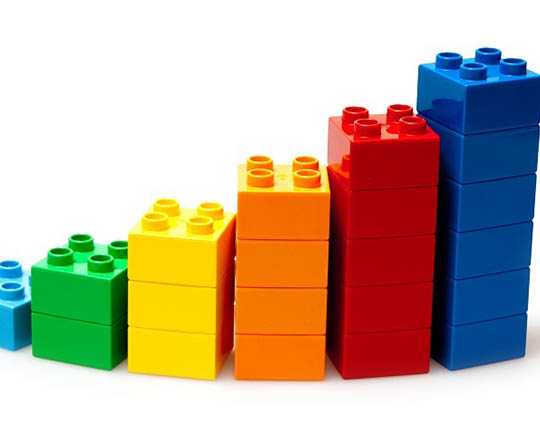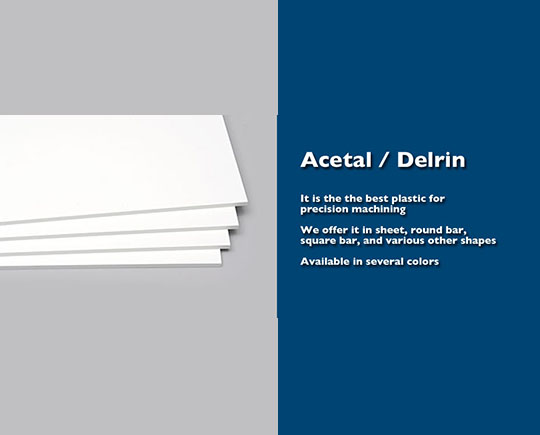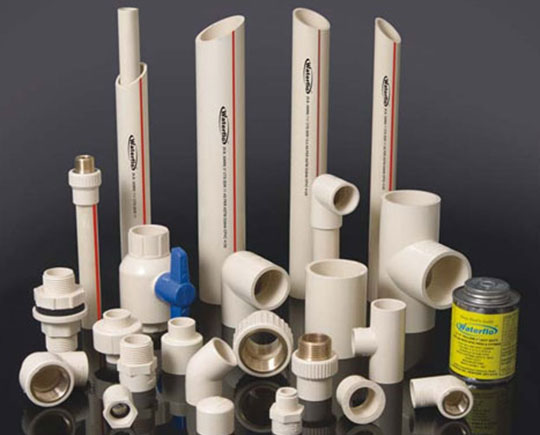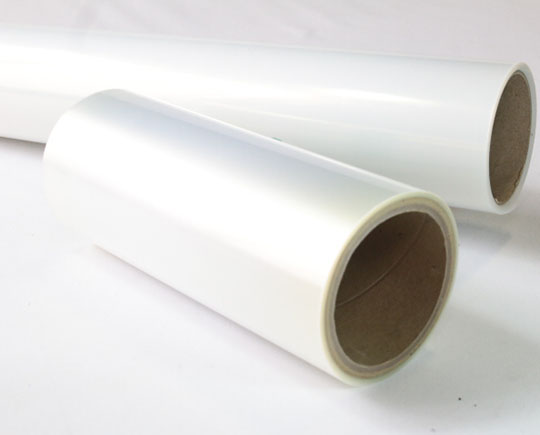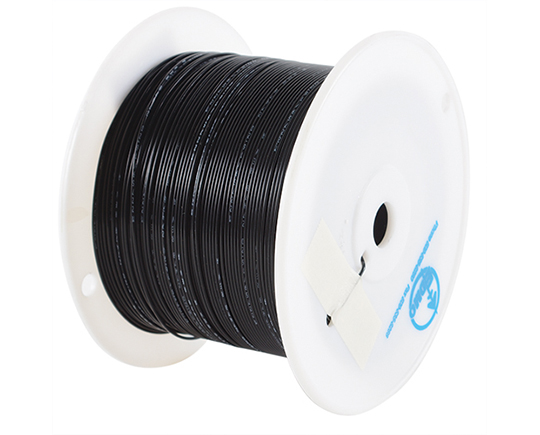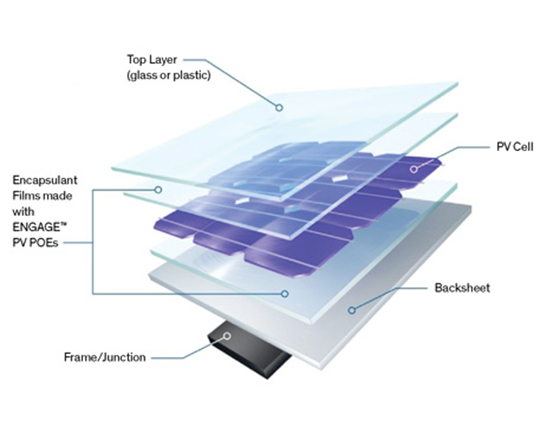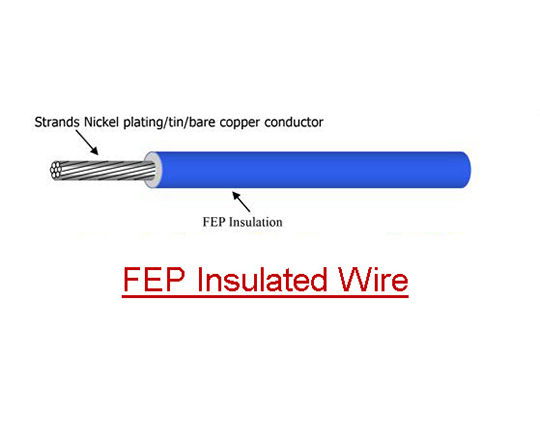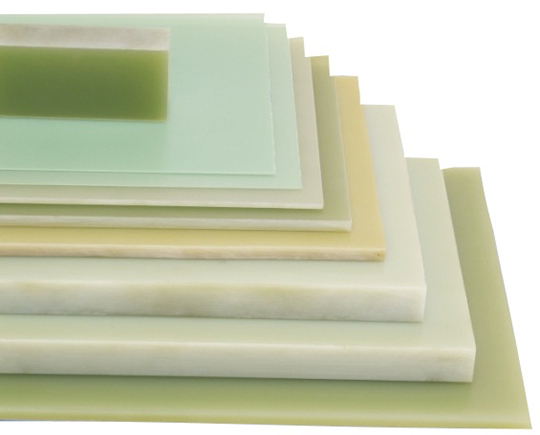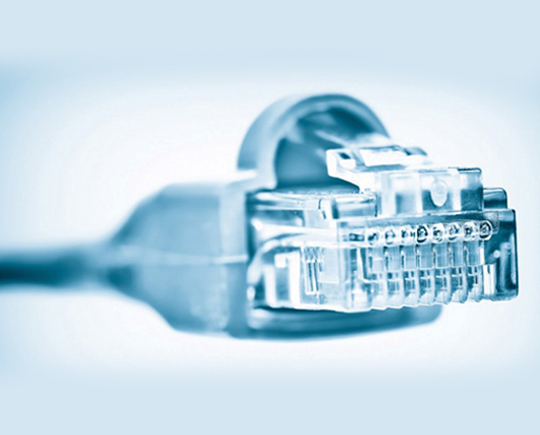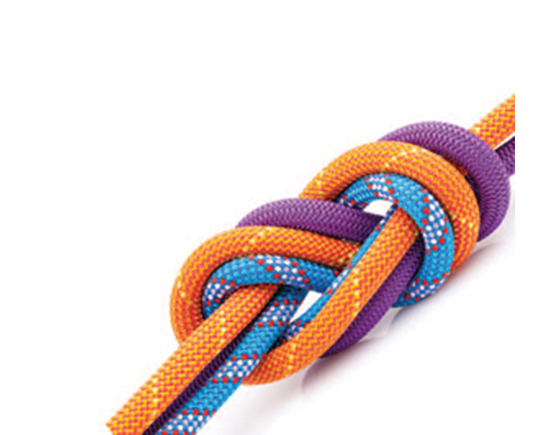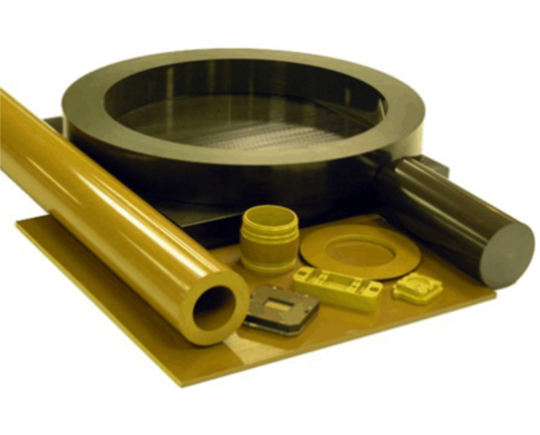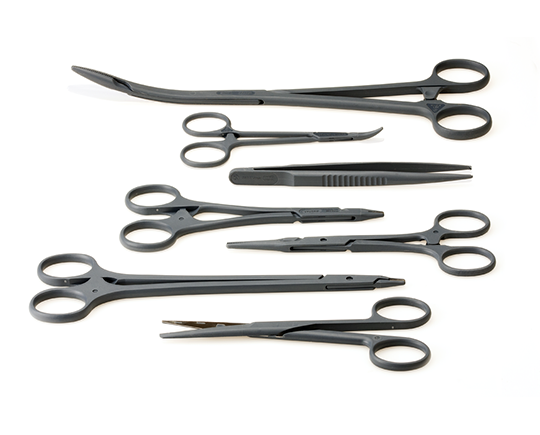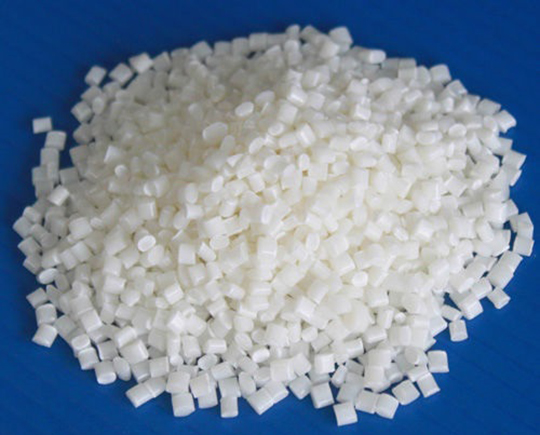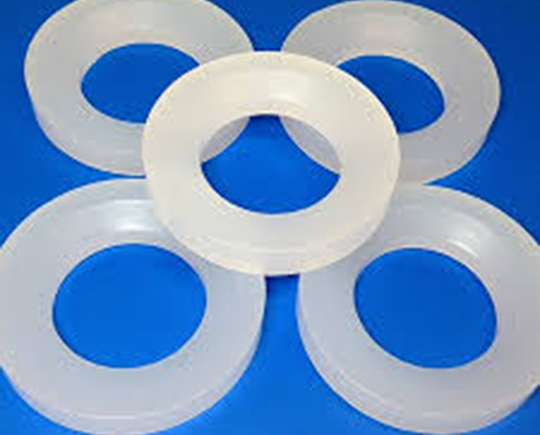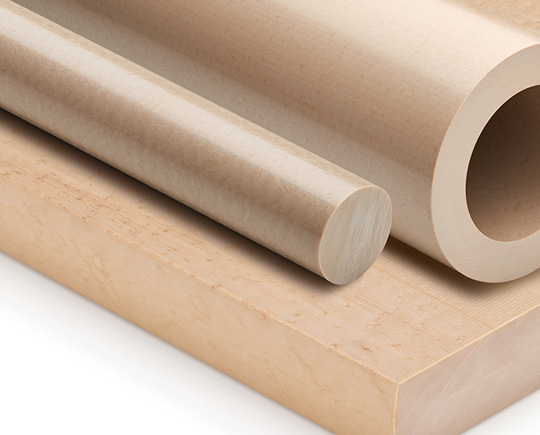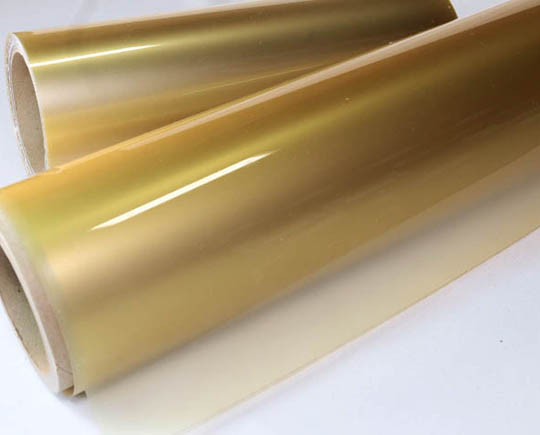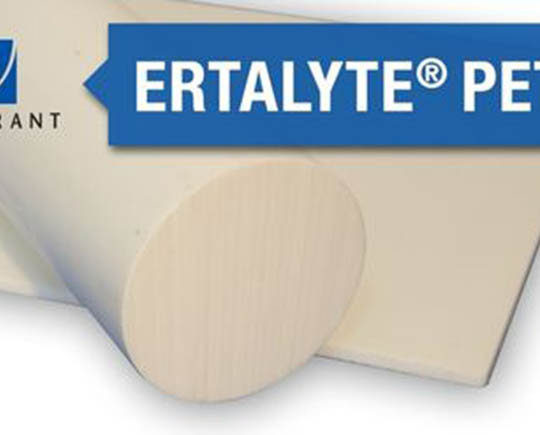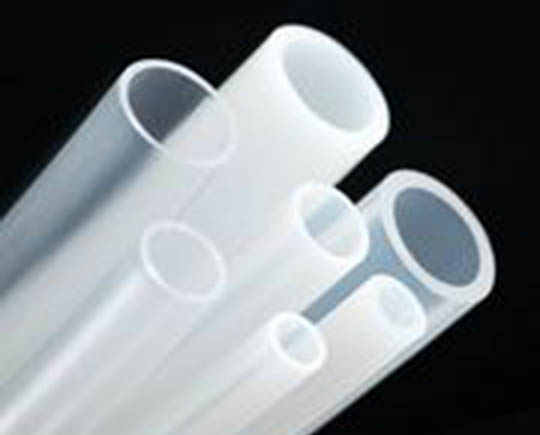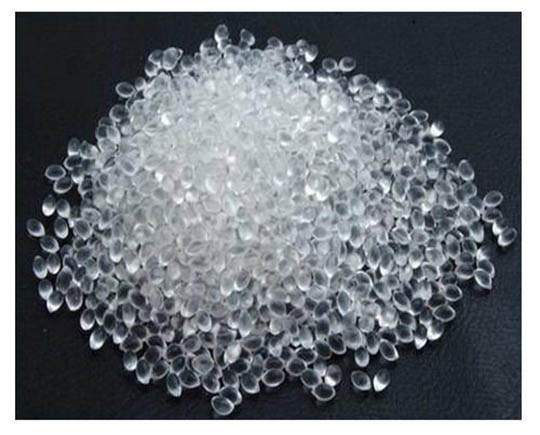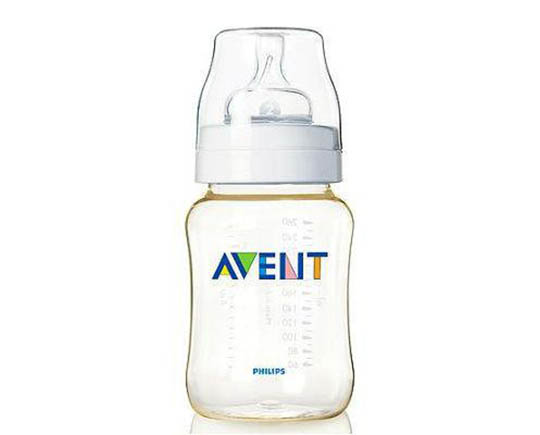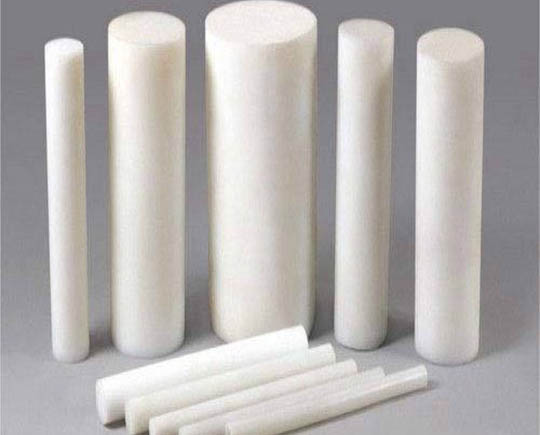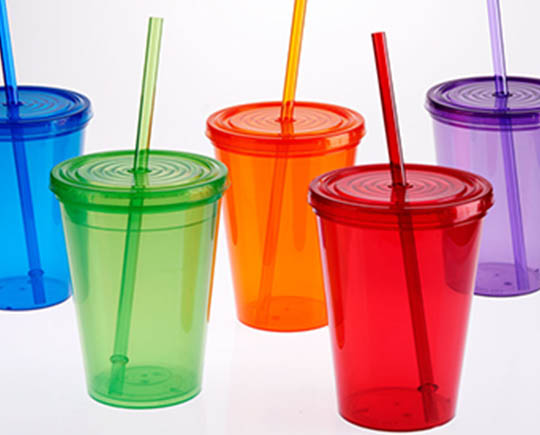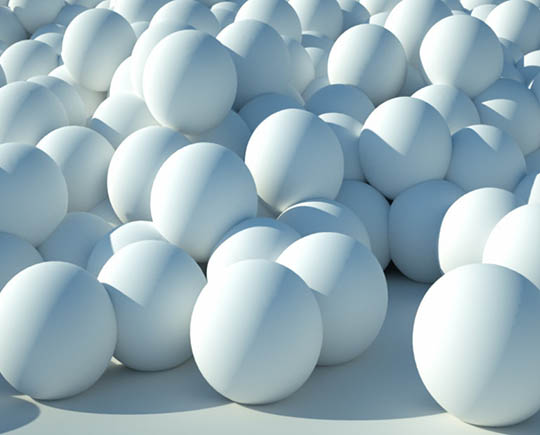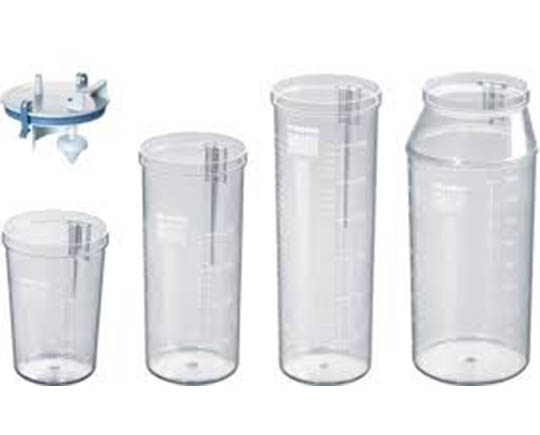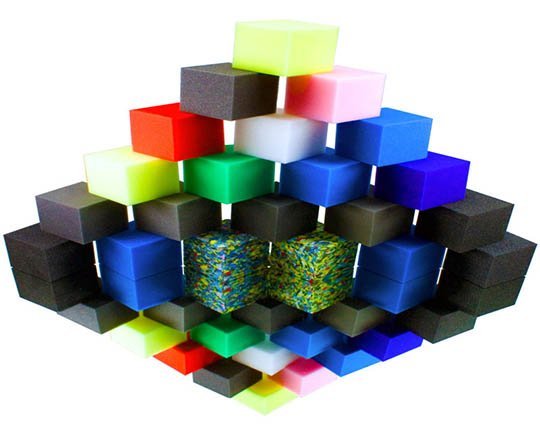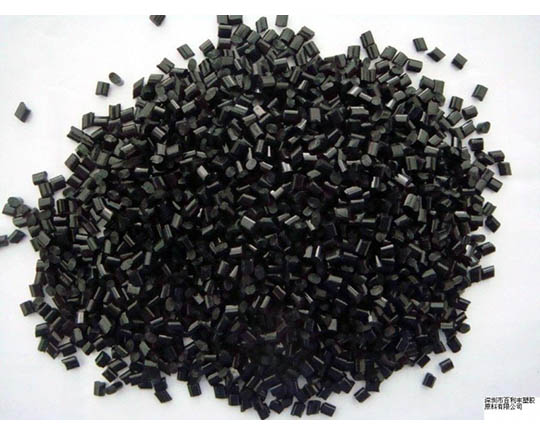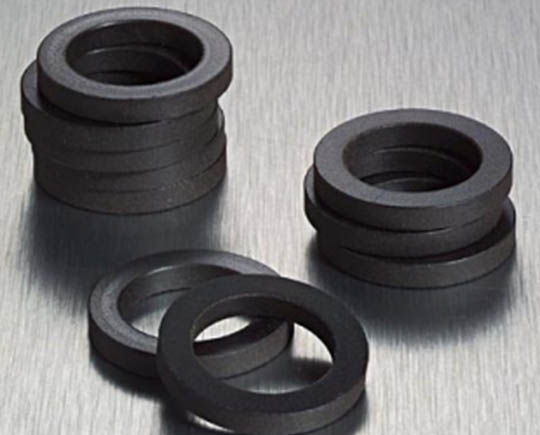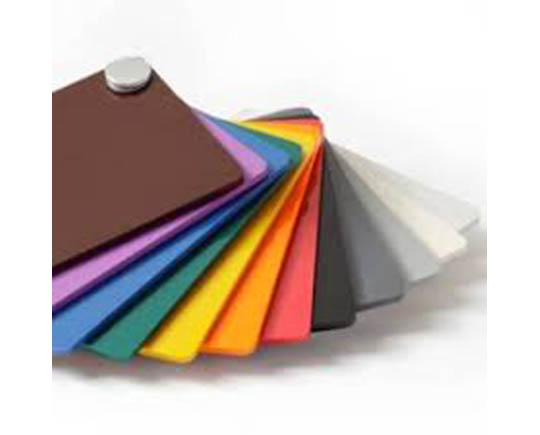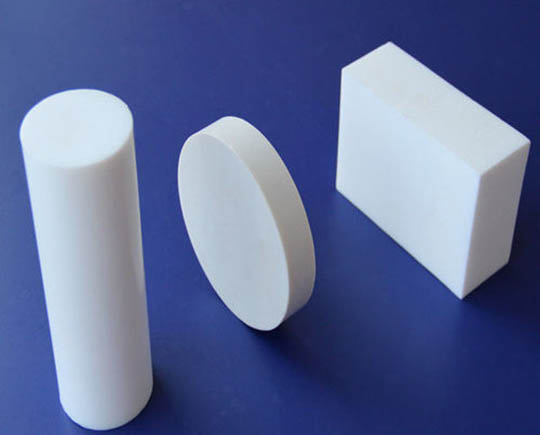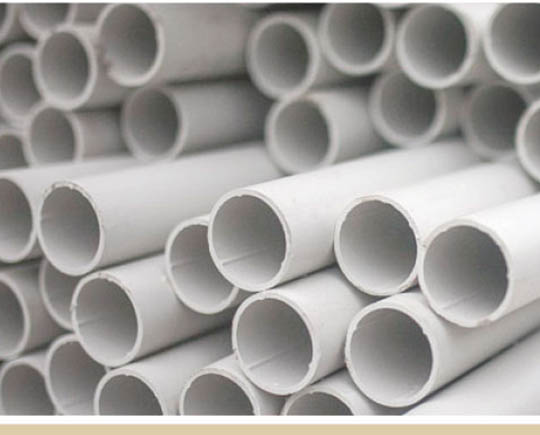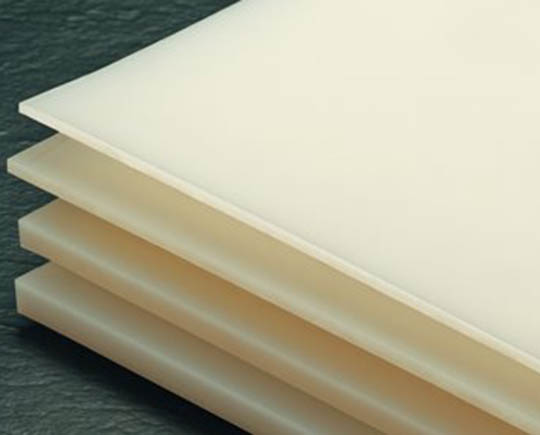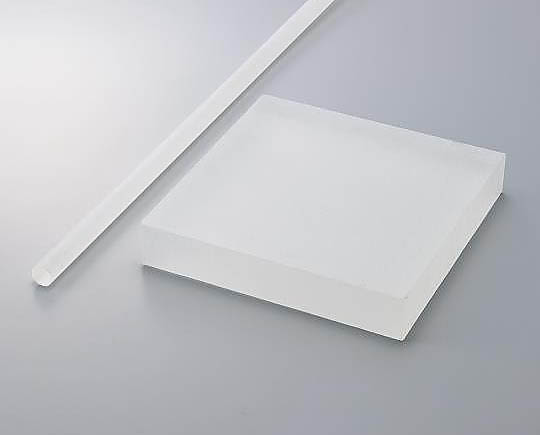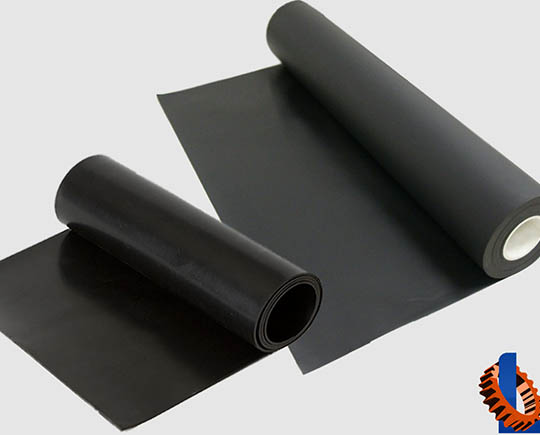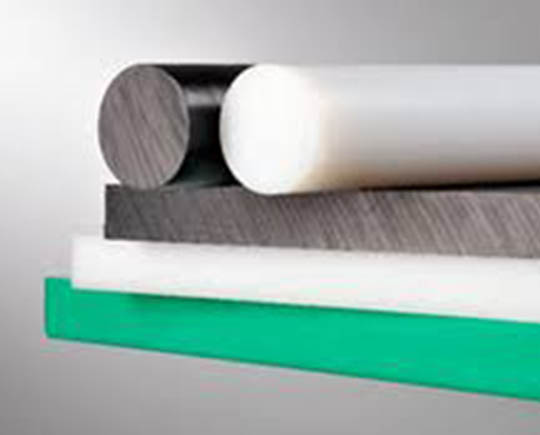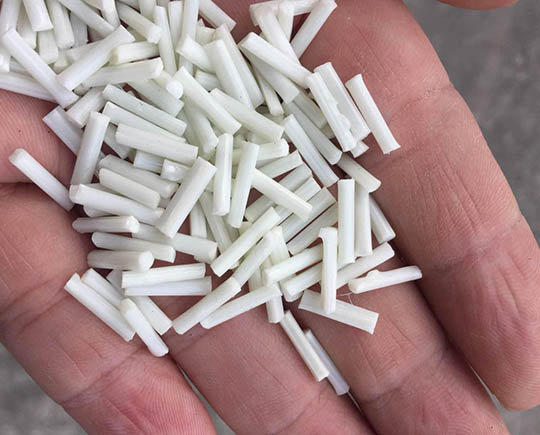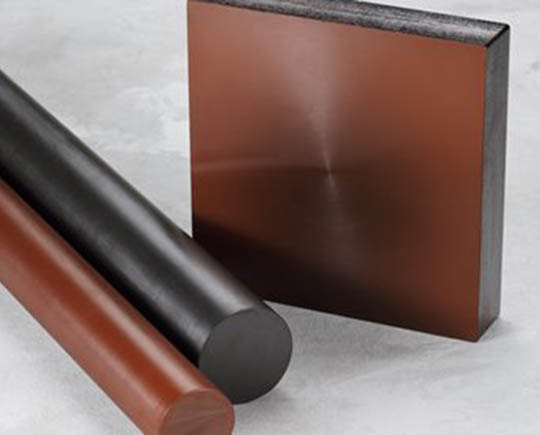The following is a selection of plastic materials that are regularly processed in our manufacturing facility. Select material names below for a brief description and access to property data.
1) ABS
Acrylonitrile Butadiene Styrene is a copolymer made by polymerizing styrene and acrylonitrile in the presence of polybutadiene. The styrene gives the plastic a shiny, impervious surface. The butadiene, a rubbery substance, provides resilience even at low temperatures. A variety of modifications can be made to improve impact resistance, toughness, and heat resistance. ABS is used to make light, rigid, molded products such as piping, musical instruments, golf club heads, automotive body parts, wheel covers, enclosures, protective headgear, and toys including Lego bricks.
2)Acetal (Delrin®, Celcon®)
Acetal is a thermoplastic polymer manufactured by the polymerization of formaldehyde. Sheets and rods made of this material possess high tensile strength, creep resistance and toughness. Acetal is used in precision parts requiring high stiffness, low friction and excellent dimensional stability. Acetal has high abrasion resistance, high heat resistance, good electrical and dielectric properties, and low water absorption. Many grades are also UV resistant.
Grades: Delrin®, Celcon®
3)CPVC
CPVC is made by the chlorination of PVC resin and is used primarily to produce piping. CPVC shares many properties with PVC, including low conductivity and excellent corrosion resistance at room temperature. The extra chlorine in its structure also makes it more corrosion resistant than PVC. Whereas PVC begins to soften at temperatures over 140°F (60°C), CPVC is useful to temperatures of 180°F (82°C). Like PVC, CPVC is fire-retardant. CPVC is readily workable and can be used in hot water pipes, chlorine pipes, sulfuric acid pipes, and high-pressure electric cable sheaths.
4)ECTFE (Halar®)
A copolymer of ethylene and chlorotrifluoroethylene, ECTFE (Halar®) is a semi-crystalline melt processable partially fluorinated polymer. ECTFE (Halar®) is particularly suitable for use as a coating material in protection and anti-corrosion applications thanks to its unique combination of properties. It offers high impact strength, chemical and corrosion resistance over a wide temperature range, high resistivity and a low dielectric constant. It also has excellent cryogenic properties.
5)ETFE (Tefzel®)
Ethylene tetrafluoroethylene, ETFE, a fluorine based plastic, was designed to have high corrosion resistance and strength over a wide temperature range. ETFE is a polymer and its source-based name is poly(ethene-co-tetrafluoroethene). ETFE has a relatively high melting temperature, excellent chemical, electrical and high energy radiation resistance properties. ETFE (Tefzel®) resin combines superior mechanical toughness with an outstanding chemical inertness that approaches that of PTFE (Teflon®) fluoroplastic resins.
7)FEP
FEP is very similar in composition to the fluoropolymers PTFE and PFA. FEP and PFA both share PTFE’s useful properties of low friction and non-reactivity, but are more easily formable. FEP is softer than PTFE and melts at 500°F (260 °C); it is highly transparent and resistant to sunlight. In terms of corrosion resistance, FEP is the only other readily available fluoropolymer that can match PTFE’s own resistance to caustic agents, as it is a pure carbon-fluorine structure and fully fluorinated. A noteworthy property of FEP is that it is vastly superior to PTFE in some coating applications involving exposure to detergents.
8)G10/FR4
G10/FR4 is an electrical-grade, dielectric fiberglass laminate epoxy resin system combined with a glass fabric substrate. G10/FR4 offers excellent chemical resistance, flame ratings and electrical properties under both dry and humid conditions. It also features high flexural, impact, mechanical and bond strength at temperatures up to 266°F (130°C). G10/FR4 is suitable for structural, electronic, and electrical applications as well as pc boards.
9)LCP
Liquid crystal polymers are high-melting-point thermoplastic materials. LCP exhibits natural hydrophobic properties that limit moisture absorption. Another natural trait of LCP is its ability to withstand significant doses of radiation without degradation of physical properties. In terms of chip packaging and of electronic components, the LCP materials exhibit low coefficient of thermal expansion (CTE) values. Its major uses are as electrical and electronic housings because of its high temperature and electrical resistance.
10)Nylon
Nylon 6/6 is a general-purpose nylon that can be both molded and extruded. Nylon 6/6 has good mechanical properties and wear resistance. It has a much higher melting point and higher intermittent use temperature than cast Nylon 6. It is easy to dye. Once dyed, it exhibits superior colorfastness and is less susceptible to fading from sunlight and ozone and to yellowing from nitrous oxide. It is frequently used when a low cost, high mechanical strength, rigid and stable material is required. It is one of the most popular plastics available. Nylon 6 is much more popular in Europe while Nylon 6/6 is hugely popular in the USA. Nylon can also be molded quickly and in very thin sections, as it loses its viscosity to a remarkable degree when molded.Nylon does not withstand moisture and watery environments well.
Nylon 4/6 is primarily used in higher temperature ranges where stiffness, creep resistance, continuous heat stability and fatigue strength are required. Therefore Nylon 46 is suitable for high quality applications in plant engineering, the electrical industry and in automotive applications under the hood. It is more expensive than Nylon 6/6 but it is also a vastly superior material which withstands water much better than Nylon 6/6 does.
Grades: - 4/6 30% glass-filled, heat stabilized 4/6 30% glass-filled, flame resistant, heat stabilized - 6/6 Natural - 6/6 Black - 6/6 Super Tough
11)PAI (Torlon®)
PAI (polyamide-imide) (Torlon®) is a high strength plastic with the highest strength and stiffness of any plastic up to 275°C (525°F). It has outstanding resistance to wear, creep, and chemicals, including strong acids and most organic chemicals, and is ideally suited for severe service environments. Torlon is typically used to make aircraft hardware and fasteners, mechanical and structural components, transmission and powertrain components, as well as coatings, composites, and additives. It may be injection molded but, like most thermoset plastics, it must be post-cured in an oven. Its relatively complicated processing makes this material expensive, stock shapes in particular.
12)PARA (IXEF®)
PARA (IXEF®) provides a unique combination of strength and aesthetics, making it ideal for complex parts that require both overall strength and a smooth, beautiful surface. PARA (IXEF®) compounds typically contain 50-60% glass fiber reinforcement, giving them remarkable strength and rigidity. What makes them unique is that even with high glass loadings, the smooth, resin-rich surface delivers a high-gloss, glass-free finish that is ideal for painting, metallization or producing a naturally reflective shell. In addition, PARA (IXEF®) is an extremely high-flow resin so it can readily fill walls as thin as 0.5 mm, even with glass loadings as high as 60%..
13)PBT
Polybutylene terephthalate (PBT) is a thermoplastic engineering polymer that is used as an insulator in the electrical and electronics industries. It is a thermoplastic (semi-)crystalline polymer and a type of polyester. PBT is resistant to solvents, shrinks very little during forming, is mechanically strong, heat-resistant up to 302°F (150 °C) (or 392°F (200 °C) with glass-fiber reinforcement) and can be treated with flame retardants to make it noncombustible.
PBT is closely related to other thermoplastic polyesters. Compared to PET (polyethylene terephthalate), PBT has slightly lower strength and rigidity, slightly better impact resistance, and a slightly lower glass transition temperature. PBT and PET are sensitive to hot water above 60 °C (140 °F). PBT and PET need UV protection if used outdoors.
14)PCTFE (KEL-F®)
PCTFE, formerly called by its original trade name, KEL-F®, has higher tensile strength and lower deformation under load than other fluoropolymers. It has a lower glass transition temperature than other fluoropolymers. Like most or all other fluoropolymers it is inflammable. PCTFE really shines in cryogenic temperatures, as it retains its flexibility down to -200°F (-129®C) or more. It does not absorb visible light but is susceptible to degradation caused by exposure to radiation. PCTFE is resistant to oxidation and has a relatively low melting point. Like other fluoropolymers, it is frequently used in applications that require zero water absorption and good chemical resistance.
15)PEEK
PEEK is a high strength alternative to fluoropolymers with an upper continuous-use temperature of 480°F (250°C). PEEK exhibits excellent mechanical and thermal properties, chemical inertness, creep resistance at high temperatures, very low flammability, hydrolysis resistance, and radiation resistance. These properties make PEEK a preferred product in the aircraft, automotive, semiconductor, and chemical processing industries. PEEK is used for wear and load bearing applications such as valve seats, pump gears, and compressor valve plates.
Grades: Unfilled, 30% short glass-filled
16)PEI (Ultem®)
PEI (Ultem®) is a semi-transparent high temperature plastic material with extremely high strength and stiffness. PEI is resistant to hot water and steam and can withstand repeated cycles in a steam autoclave. PEI has outstanding electrical properties and one of the highest dielectric strengths of any commercially available thermoplastic material. It is often used instead of polysulfone when superior strength, stiffness, or temperature resistance is required. PEI is available in glass-filled grades with enhanced strength and stiffness. It is another plastic which finds many uses under the hood in trucks and autos. Ultem 1000® has no glass in it while Ultem 2300® is filled with 30% short glass fiber.
Grades: Ultem 2300 and 1000 in black and natural
17)PET-P (Ertalyte®)
Ertalyte® is an unreinforced, semi-crystalline thermoplastic polyester based on polyethylene terephthalate (PET-P). It is manufactured from proprietary resin grades made by Quadrant. Only Quadrant can offer Ertalyte®. It is characterized as having the best dimensional stability coupled with excellent wear resistance, a low coefficient of friction, high strength, and resistance to moderately acidic solutions. Ertalyte®’s properties make it especially suitable for the manufacture of precision mechanical parts which are capable of sustaining high loads and enduring wear conditions. Ertalyte®’s continuous service temperature is 210°F (100°C) and its melting point is almost 150°F (66°C) higher than acetals. It retains significantly more of its original strength up to 180°F (85°C) than nylon or acetal.
18)PFA
Perfluoroalkoxy alkanes or PFA are fluoropolymers. They are copolymers of tetrafluoroethylene and perfluoroethers. In terms of their properties, these polymers are similar to polytetrafluoroethylene (PTFE). The big difference is that the alkoxy substituents allow the polymer to be melt-processed. On a molecular level, PFA has a smaller chain length, and higher chain entanglement than other fluoropolymers. It also contains an oxygen atom at the branches. This results in a material that is more translucent and has improved flow, creep resistance, and thermal stability close to or exceeding PTFE.
19)Polycarbonate (PC)
Amorphous polycarbonate polymer offers a unique combination of stiffness, hardness and toughness. It exhibits excellent weathering, creep, impact, optical, electrical and thermal properties. Available in many colors and effects, it was originally developed by GE Plastics, now SABIC Innovative Plastics. Because of its extraordinary impact strength, it is the material for helmets of all kinds and for bullet-proof glass substitutes. It is, along with nylon and Teflon®, one of the most popular plastics.
20)Polyethersulfone (PES)
PES (Polyethersulfone) (Ultrason®) is a transparent, heat resistant, high performance engineering thermoplastic. PES is a strong, rigid, ductile material with excellent dimensional stability. It has good electrical properties and chemical resistance. PES can withstand prolonged exposure to elevated temperatures in air and water. PES is used in electrical applications, pump housings, and sight glasses. The material can also be sterilized for use in medical and food service applications. Along with some other plastics such as PEI (Ultem®), it is relatively transparent to radiation.
21)Polyethylene (PE)
Polyethylene can be used for film, packaging, bags, piping, industrial applications, containers, food packaging, laminates, and liners. It is high impact resistant, low density, and exhibits good toughness and good impact resistance. It can be used in a wide variety of thermoplastics processing methods and is particularly useful where moisture resistance and low cost are required.
HD-PE is a polyethylene thermoplastic. HD-PE is known for its large strength-to-density ratio. Although the density of HD-PE is only marginally higher than that of low-density polyethylene, HD-PE has little branching, giving it stronger intermolecular forces and tensile strength than LD-PE. The difference in strength exceeds the difference in density, giving HD-PE a higher specific strength. It is also harder and more opaque and can withstand somewhat higher temperatures (248°F (120°C) for short periods, 230°F (110°C) continuously). HD-PE is used in a wide range of applications.
Grades: HD-PE, LD-PE
22)Polypropylene (PP)
Polypropylene is a thermoplastic polymer used in a wide variety of applications including packaging, textiles (e.g. ropes, thermal underwear and carpets), stationery, plastic parts and reusable containers, laboratory equipment, loudspeakers, automotive components, and polymer banknotes. A saturated addition polymer made from the monomer propylene, it is rugged and unusually resistant to many chemical solvents, bases and acids.
Grades: 30% glass filled, unfilled
23)Polystyrene (PS)
Polystyrene (PS) is a synthetic aromatic polymer made from the monomer styrene. Polystyrene can be solid or foamed. General purpose polystyrene is clear, hard, and rather brittle. It is an inexpensive resin per unit weight. Polystyrene is one of the most widely used plastics, the scale of its production being several billion kilograms per year.
24)Polysulphone (PSU)
This high-performance thermoplastic resin is noted for its ability to resist deformation under load in a broad range of temperature and environmental conditions. It can be effectively sanitized with standard sterilization techniques and cleaning agents, remaining tough and durable in water, steam and chemically harsh environments. This stability makes this material ideal for applications in the medical, pharmaceutical, aircraft and aerospace, and food processing industries, as it can be irradiated and autoclaved.
25)Polyurethane
Solid polyurethane is an elastomeric material of exceptional physical properties including toughness, flexibility, and resistance to abrasion and temperature. Polyurethane has a broad hardness range from eraser soft to bowling ball hard. Urethane combines the toughness of metal with the elasticity of rubber. Parts made from urethane elastomers often outwear rubber, wood and metals 20 to 1. Other polyurethane characteristics include extremely high flex-life, high load-bearing capacity and outstanding resistance to weather, ozone, radiation, oil, gasoline and most solvents.
26)PPE (Noryl®)
The Noryl® family of modified PPE resins consists of amorphous blends of PPO polyphenylene ether resin and polystyrene. They combine the inherent benefits of PPO resin, such as affordable high heat resistance, good electrical properties, excellent hydrolytic stability and the ability to use non-halogen FR packages, with excellent dimensional stability, good process ability and low specific gravity. Typical applications for PPE (Noryl®) resins include pump components, HVAC, fluid engineering, packaging, solar heating parts, cable management, and mobile phones. It also molds beautifully.
27)PPS (Ryton®)
Polyphenylene Sulfide (PPS) offers the broadest resistance to chemicals of any high performance engineering plastic. According to its product literature, it has no known solvents below 392°F (200°C) and is inert to steam, strong bases, fuels and acids. However, there are some organic solvents which will force it to soften and craze. Minimal moisture absorption and a very low coefficient of linear thermal expansion, combined with stress-relieving manufacturing, make PPS ideally suited for precise tolerance machined components.
28)PPSU (Radel®)
PPSU is a transparent polyphenylsulfone which offers exceptional hydrolytic stability, and toughness superior to other commercially available, high-temperature engineering resins. This resin also offers high deflection temperatures and outstanding resistance to environmental stress cracking. It is used for automotive, dental, and food service applications as well as hospital goods and medical appliances.
29)PTFE (Teflon®)
PTFE is a synthetic fluoropolymer of tetrafluoroethylene. It is hydrophobic and is used as a non-stick coating for pans and other cookware. It is very non-reactive and is often used in containers and pipework for reactive and corrosive chemicals. PTFE has excellent dielectric properties and a high melting temperature. It has low friction and can be used for applications where sliding action of parts is needed, such as plain bearings and gears. PTFE has a wide variety of other applications including coating bullets and use in medical and laboratory equipment. Given its many uses, which include everything from an additive to coatings, to its uses for gears, fasteners and more, it is, along with nylon, one of the most widely used polymers.
30)PVC
PVC is commonly used for wire & cable appliances, medical/healthcare appliances, tubing, cable jacketing, and automotive appliances. It has good flexibility, is flame retardant, and has good thermal stability, a high gloss, and low (to no) lead content. The neat homopolymer is hard, brittle and difficult to process but it becomes flexible when plasticized. Polyvinyl chloride molding compounds can be extruded, injection molded, compression molded, calendered, and blow molded to form a huge variety of rigid of flexible products. Due to its wide use as indoor and in-ground wastewater piping, thousands and thousands of tons of PVC is produced every year.
31)PVDF (Kynar®)
PVDF resins are used in the power, renewable energies, and chemical processing industries for their excellent resistance to temperature, harsh chemicals and nuclear radiation. PVDF is also used in the pharmaceutical, food & beverage and semiconductor industries for its high purity and availability in a multitude of forms. It can also be used in the mining, plating and metal preparation industries for its resistance to hot acids of a wide range of concentrations. PVDF is also used in the automotive and architectural markets for its chemical resistance, excellent weatherability and resistance to UV degradation.
33)Santoprene®
Santoprene® thermoplastic vulcanizates (TPVs) are high-performance elastomers that combine the best attributes of vulcanized rubber – such as flexibility and low compression set – with the processing ease of thermoplastics. In consumer and industrial product applications, the combination of Santoprene TPV properties and ease of processing delivers improved performance, consistent quality and lower production costs. In automotive applications, the light weight of Santoprene TPVs contributes to improved efficiency, fuel economy and reduced costs. Santoprene also offers numerous benefits in appliance, electrical, construction, healthcare and packaging applications. It is often also used to overmold items such as toothbrushes, handles, etc.
34)TPU (Isoplast®)
Originally developed for medical use, TPU is available in long glass fiber-filled grades. TPU combines the toughness and dimensional stability of amorphous resins with the chemical resistance of crystalline materials. The long fiber reinforced grades are strong enough to replace some metals in load bearing applications. TPU is also sea water and UV resistant, making it ideal for underwater applications.
Grades: 40% long glass-filled, 30% short glass-filled, 60% long glass-filled
35)UHMW®
Ultra High Molecular Weight (UHMW) Polyethylene is often referred to as the world’s toughest polymer. UHMW is a linear, ultra high-density polyethylene which has high abrasion resistance as well as high impact strength. UHMW is also chemical resistant and has a low coefficient of friction that makes it highly effective in a variety of applications. UHMW can be cross-linked, reprocessed, color-matched, machined and fabricated to meet most customer requirements. It is extrudable but not injection moldable. Its natural lubricity leads to extensive use for skids, gears, bushings, and other applications where sliding, meshing or other forms of contact are required, particularly in the papermaking industry.
36)Vespel®
Vespel is a high performance polyimide material. It is one of the highest performing engineering plastics currently available. Vespel will not melt and can operate continuously from cryogenic temperatures to 550°F (288°C) with excursions to 900°F (482°C). Vespel components consistently exhibit superior performance in a variety of applications requiring low wear and long life in severe environments. It can be used for rotary seal rings, thrust washers and discs, bushings, flanged bearings, plungers, vacuum pads, and thermal and electrical insulators. Its one drawback is its relatively high cost. A ¼” diameter rod, 38” long, can cost $400 or more.
Post time: Nov-05-2019

